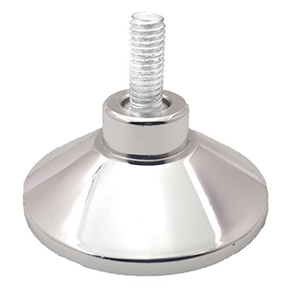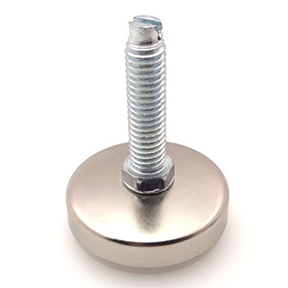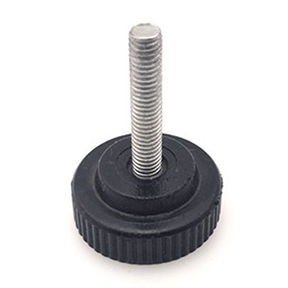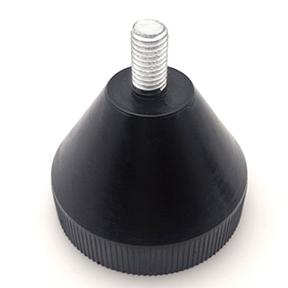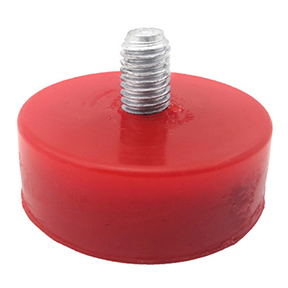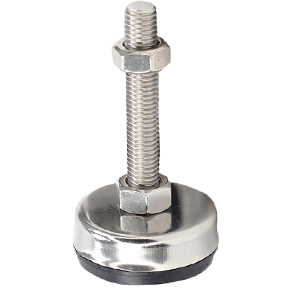Racing-type bicycle handlebar Optimization
2013-07-05 13:53:49
Deng Zuoliang 1 Zheng Kai-wen 2
(1 Hsiuping Institute of Technology Department of Mechanical Engineering, Taichung 41280 China Taiwan;
2 Institute of Mechanical Engineering, Da-Yeh University, Changhua 51591 China Taiwan)
Abstract: The bicycle handlebar is an important support and load bearing parts, especially by bicycle handlebar rider pedaling force and quality of the resulting reaction force and the pressure is quite large, so early in the design shall be bicycle handlebar strength and rigidity design focus, and the need to comply with regulatory requirements to ensure that its structural strength and safety. For the establishment of CAE simulation technology in the design and structure of the research and development of energy bike to race bike handlebars as the research object type and by race-type bike handlebar design focus of discussion, to change the traditional circular section handle, design phase corresponding to the cross-sectional geometry of the handlebar and wall thickness, in order to reduce the increase in size to increase the stress concentration caused by the fixed end of the phenomenon and to improve the handle due to the deformation energy loss resulting stepped phenomenon. For hand geometry optimization, in order to achieve a circular cross section than conventional lighter and stronger grip type handle design competitions. Optimized design of the handle structure must be in accordance with EU EN 14781 static and fatigue testing regulations, and the German DIN 79100 test simulates the impact test regulations to ensure that the design of the handle structure meets regulatory specifications. This competition shaped handle numerical model design analysis method provides related industries in product development and design future reference when.
Keywords: bicycle bike handlebar ANSYS optimization design
CLC: TP391
Foreword *
Bicycle rider's three supporting parts were hand, cushion and foot board, using only the driver of the central fixed riser will connect with the head tube, and lend a hand to bear ends up pulling downward pressure as well as the impact of the road came, no other bar connections, and are thus more vulnerable at the structural strength. The traveling environment for bicycle race is generally flat surface, even special runway surface hardly withstand impact caused. Since this type of bike is designed to racing, so a reduction of energy consumption is very important. While reducing the impact of surface lead, but the rider lend strength of the frame structure is very large, especially in the sprint, the handle generated by reverse pedaling force and tension on the rider's weight to the resulting Under pressure, the structure needs to be absorbed by the handle. Because only the central handle fixed and no other pipe fittings to connect, so easily after the force caused by the stress concentration at the fixed end and the free end of the occurrence of significant deflection. If the bicycle handlebar rigidity is insufficient, the rider's pedaling force will not be able to handle assisted by high rigidity and fully play out, and each time the resulting stampede handlebar deflection phenomena will lose some energy. Another bicycle handlebar according to the rider will have different sizes body design, in which the width of the opponent of the greater stiffness. Currently manufacturers in the design and manufacture of hand, he did not for the different sizes of the same section handlebars make the appropriate design, in order to reduce the load of different sizes have different effects. Bicycle is a single-track vehicle, its structure is simple but its freedom of movement are many and complex, so the design of the bicycle should be noted that in addition to all of the structural strength, to ensure the riding safety, quality, and yet to consider the bicycle pedaling energy losses and other issues. 1993 STONE, etc. [1] proposed rider weight on the impact of structural loads, made heavier riders, the larger the tread force (maximum speed fast, acceleration large), are increasing at a faster rate structure causes the load, whereas the lighter rider, the smaller the treading force, the slower the speed of the load is small relative to the frame. 1994 LESSARD, etc. [2] using the I-DEAS design of composite bicycle frame structure, the paper design of composite structures and has two other conventional configuration, and for its rigidity and comfort to be analyzed, the results showed that the design Both composite frame has a good lateral rigidity and more comfortable than traditional frame. 2004 Xie competent [3] using computer simulation techniques to investigate the structure of diamond-type bicycle frame structure in the design process as well as stress distribution on the structural life, and make its structure optimization design. 2005 Robert CHAN [4] proposed bicycle frame performance comparison test methods, including commercially available eight mountain and racing-type bicycle frame type according to the first tube vertical and lateral vehicle hydrostatic test, the vertical and lateral static rear triangle strength test, five pass water calm strength testing, performance testing and pour the impact of the project, to test and extract contains deformation and acceleration test data to evaluate the frame rigidity, braking performance, pedaling efficiency, handling and comfort and other properties of the frame. 2005 Song Yijun [5] using ANSYS finite element analysis software for analysis of composite bicycle frame, explore and be reinforced at stress concentration, respectively, for the fork forward and lateral rigidity test simulates, frame rigidity tests simulate single and bilateral and frame head tube stiffness test simulation analysis and reinforcement, effectively improve the rigidity of each part. 1999 LORENZO, etc. [6] the actual acquisition bicycle handlebar when driving the load process, the use of rain load flow method summarized the main course to be tested again; method using dynamic load, estimated bicycle handlebars and other important structural fatigue life . 2002 MCKENNA, etc. [7] using a single direction load fatigue testing methods estimate the fatigue life of bicycle handlebars, handlebar to identify the direction of the maximum load and fatigue testing to help bicycle handlebar design and testing through various regulations. 2002 CHANG [8] proposed composite bicycle handlebar stress and failure analysis procedures and methods. 1998 SEIBI etc. [9] using finite element analysis of composite bicycle tube structure and optimization analysis.
Bicycle handlebar is an important support and load bearing parts, so early in the design must be strict compliance with regulatory requirements to ensure that its structural strength and safety. Requirements for bicycle users is: Can durable, no deformation, no damage, because the rider with their own physical drive bicycle, the above concept alone is not enough, because once every stampede, frame structure with ministries on will withstand a bending or torsion, it is not only the loss of pedaling force, and because the front and rear of the posture change, increasing the rotational resistance of the bicycle, negatively adverse effects on the structure of the bicycle only be "bend, not break" is enough, we must then consider the "structural deflection or may not be easily reversed," the structural rigidity. Bicycle structural rigidity of different considerations and car or motorcycle, the biggest reasons are the following three points: ① bike and other vehicles are different, buffer means less; ② by riding a bike around the center of the pedal away from the frame, each about 100 mm, easy on the car frame have a great twist, will contribute to the opponent to produce palm deflection phenomenon; ③ vehicle engine 2 000 ~ 3 500 r / min high speed, torque roughly the same bike is on foot stampede, about 50 ~ 150 r / min of low speed, great changes in torque. These are losses cause the rider pedaling force, so bike ministries in the design structure must handle structural rigidity into account. In the past, bicycle handlebar relatively simple configuration, are all used for bending a pipe, in order to achieve the desired configuration, so are circular handle all locations. Although the circular tube of the torque and the moment have a better resistance, but if the handle configuration for the maximum load generated direction, designed to resist the sectional shape of its load, will be able to effectively increase the strength of the handle, rigidity and durability. Currently composite materials and metal materials, can be processed into any of various cross-sectional shapes of the pipe, so the design of different tubular fixed position or an increase in the diameter of the center, are currently the manufacturers to increase grip performance.
Province of China Taiwan bicycle industry development is very rapid, either into the depot or parts plant design and analysis need talent, but a large number of manufacturers, according to the traditional rule of thumb is still manufacturing bicycle handlebar, it can not provide the safest and most suitable products. As if the bicycle handlebar design complete with pilot testing process will increase the development time and cost, and therefore the effective use of CAE technology in the bicycle frame and handlebars and other components of the design and analysis can be achieved by enhancing the quality and product design and development performance purposes. For the establishment of CAE simulation technology in the design and development of energy bicycle structure, this type of bicycle handlebars to contest for the study, and by race-type bike handlebar design focus of discussion, to change the traditional circular section handle, designed handlebar corresponding sectional geometry and wall thickness, increased in size in order to reduce stress concentration caused by increase of the fixed end of the phenomenon and to improve the handle causes the deformation due to the phenomenon of loss of treading force. Finally, optimization of the geometry of the handle designed to achieve circular handle than conventional lighter and stronger competition shaped handle design. Optimized design of the handle structure must then by the European Union EN 14781 static and fatigue testing regulations, the impact of the German DIN 79100 test test simulates regulations to ensure that the design of the handle structure meets regulatory specifications. This competition shaped handle numerical model design analysis methods used in product development of related industries when designing future reference.
A structural design competition shaped handle
Racing-type bicycle handlebar in rider operation, the fixed end of the handle and the next generation torsional and flexural bend deflect the bit phenomenon, loss of pedaling force energy; and wide handlebars for its fixed end easily cause serious stress concentration, and the free end of the deflection phenomenon of the loss of a large energy; different cross-sectional shapes due to the design of the handle, the handle structure can effectively improve the bending and torsional rigidity, thus reducing energy consumption, for example, If the tube into an oval-shaped design, you can take advantage of some of the larger major axis of inertia to resist flexing. This section will design a circular shape of the race shaped handle, and two different shapes competition shaped handle elliptical cross section shown in Figure 1, and use the static strength test analysis, comparing three kinds of configurations hands The fixed end and the position of the bend under stress, the free end deflection and handle quality. If effectively reduce stress, deflection, and the quality of hand-shaped cross-sectional configuration, which represents the cross-sectional configuration of the handle which has better structural rigidity, and can reduce the loss of the treading force, and reduce the weight and to reduce production costs purposes.
Figure 1 Schematic cross-sectional shape handle
1.1 Handle finite element model
Bicycle handlebar material is aluminum alloy 6061-T6, a density of 2.7 g/cm3, an elastic modulus of 68.9 GPa, a yield strength of 255MPa, ultimate tensile strength of 290 MPa, Poisson's ratio of 0.33. Competition shaped handle construction of the finite element model, in the circular handle aspects: First, Solid works within the construct drawing software configuration bicycle handlebar centerline, then this centerline import ANSYS finite element analysis software, model to establish a central circular centerline, the centerline of designated detour established entity tubular. The radius of the tube is 12.7 mm, thickness of 2.0 mm, a width of 380.0 mm, with the shell element numerical model elements, and set the parameters of structural materials, and then mesh finite element model, shown in Figure 2; round section
Total handle finite element model has six 200 elements and 9300 nodes. In paragraph 1 elliptical cross section A-type handle: the centerline of the model to establish a central elliptical cross section, circular cross-sectional area should be equal to handle cross-sectional area, specify bypass the centerline of the tubular established entity, its oval axis (y-axis) radius of 16.12 mm, short axis (x-axis) radius of 10 mm, a thickness of 2 mm, a width of 380 mm, using shell element numerical model elements, and set the parameters of structural materials, and then limited element meshing model, shown in Figure 3; oval shaped handle section A finite element model of a total of 6200 elements and 9300 nodes. In paragraph 2, elliptical cross section B-type handle aspects of the model centerline axis direction, creating another central elliptical cross section, circular cross-sectional area should be equal to handle cross-sectional area, specify bypass the centerline of the pipe to establish the entity shape. The ellipse major axis (x-axis) radius of 14.6mm, the short axis (y-axis) radius of 11.0 mm, a thickness of 2.0 mm, a width of 380.0 mm, with the structural shell element model elements, then the finite element mesh division, shown in Figure 4; elliptical cross section B-handle finite element model elements in a total of 6 200 and 9 300 nodes.
1.2 Handle static strength analysis
The move by bike riders pull the handle and under the pressure of the load will cause the loss of pedaling power handle deformation, respectively, for this 3 handle static strength test and analysis, structural stress and deflection by results Comparison shot put performance. First, the three finite element models handle model Central (35 mm) portion of all degrees of freedom constraint, and at a distance of 50 mm at the free end downward force is applied to 1 kN. 3 handle the stress and deflection calculation results shown in Table 1, from Table 1 that, by the hand circular mass of 318.16 g, the position of the bend of the stress of 241.85 MPa, the fixed end stress of 255.87 MPa the free end deflection 21.68 mm; elliptical cross section A-type handle a mass of 254.72 g, the position of the bend under the stress of 239.30 MPa, the fixed end stress 261.48 MPa, the free end deflection 17.32 mm; elliptical cross section B-type handlebar mass 335.02 g, the position of the bend under the stress of 243.53 MPa, the fixed end stress 249.52MPa, free end deflection 22.95 mm. All three of these cross-sectional shape of the handle configuration, the stress concentration at the two sites under the handle of the position of the fixed end of the bend and stress less, but the elliptical cross section A-type handlebar can effectively reduce the structural quality and can effectively reduce the deflection of the free end, section A display oval shaped handle is preferably designed to effectively reduce the loss of pedaling energy.
2 Optimal Design Contest shaped handle
Bicycle Handlebar addition to complying with the basic requirements of regulatory testing, the manufacturers want the product to use less material and provide greater strength, not only to reduce costs, improve product quality can increase the value of the product, but also to show manufacturers in the design and production processes. To achieve the above objectives, in addition to the general structural strength analysis, structural optimization design must meet before they get the perfect and reliable products. Diameter size, wall thickness, elliptical cross-sectional shape and rigidity ratio are the factors that affect the bicycle handlebar However, not all fit parameters can be increased to become the best products, most likely resulting structural strength is too strong and material wastage , and increase the quality and cost of unnecessary and therefore must comply with regulatory requirements under the premise, as far as possible and to increase the structural strength and rigidity to maintain the quality of the smaller, so the design must be optimized before hand to achieve the above objectives.
In this section, products are commonly used 380 mm Width of oval type A handlebar width dimensions as the basis for the design optimization. Optimal design of the handle, the design variables are the long axis of the tubular handlebar radius ra, rb minor radius and wall thickness δ; limiting conditions for the handle and the total weight of oval cross-sectional shape ratio (minor axis radius divided by radius, ie, rb / ra), this variable is set a limit quality handle, that handle the same width as the total mass of circular ceiling; objective function compared to the fixed end stress minimum. First, the design of the handle 380 mm optimal parameters, design variables range is set as follows: major axis radius ra = 12 ~ 18 mm, short axis radius rb = 9 ~ 13 mm, cross-sectional shape of the ellipse ratio R = 0.5 ~ 1.0, wall thickness δ = 1.0 ~ 2.2 mm; restriction is smaller than the width of the circular handle the same mass 318.16 g.
From the above results, the bicycle handlebar with appropriate diameter, tube, pipe thickness can effectively reduce the mass, and the free end deflection stress, reduce the weight and to increase strength and rigidity purposes and to reduce energy loss pedaling, more effective solution to the large size of the handle on the fixed end of the more serious stress concentration.
3 Bicycle Handlebar regulation test simulation
The handle structure optimization design must then be simulated regulatory testing to ensure that the design of the handle structure in accordance with specifications and regulations, the following will be the most suitable design of the handle structure, using the European EN 14781 test the static strength and fatigue regulations, and the German DIN 79100 regulations for testing the impact test simulations.
3.1 Handle static testing regulations
According to the European EN 14781 regulations hydrostatic test specification, the Department of the central portion fixed to the bicycle handlebar and handlebar away at the end of 50mm ± 1 mm, lend downward force of 1 000 N and Shi Liwei hold 1 min , tested according to the test, cracks or cracks can not handle, and a measurement point of the test force permanent deformation of not more than 15 mm, as shown in Figure 5. The width of the oval cross-section 380 mm handlebar simulation environment according to regulations, to obtain the test force point of a permanent deformation of 0.9 mm, the deflection amount of the action point shown in Figure 6. Permanent deformation due handle regulatory requirements were less than the maximum amount of permanent deformation 15 mm, therefore the optimal design of the contest have passed EN 14781 type handle static test specifications.
3.2 Handle fatigue testing
According to the European EN 14781 regulations fatigue test specification, the Department of the central part of the bicycle handlebar fixed position within the next bend of the central impose ± 400 N in the same direction force circulation 100,000 times the maximum test frequency of 25 Hz, test standards During the test, the driver may not be broken or cracked, shown in Figure 7. The width of the oval cross-section 380 mm handlebar simulation environment according to regulations, to obtain the number of the fatigue life of 150 000, the stress concentration near the fixed end portion shown in Figure 8, this part is also the starting point of fatigue failure. Since handle the fatigue life of more than 100 000 requests for legislation and therefore optimal design competition shaped handle have passed EN14781 fatigue test specifications.
3.3 Handle Impact Test
According to the German DIN 79100 regulations impact test specification, the Department of the central part of the bicycle handlebar fixed, and a mass 10 kg weight, height 500 mm vertical drop at impact away from the handle end 50 mm at the test standard handle without breaking and no cracks, as shown in Figure 9.
Elliptical cross-section the width 380 mm handlebar simulation environment according to regulations, 0.31 s at the fixed end of the handle collisions and stress have a greater impact point value, the simulation of dynamic response shown in Figure 10, the maximum stress during is 285.04 MPa, ultimate stress of the material does not reach 290 MPa, the determination is not damaged during the permanent deformation of the impact point is 6.02 mm, the impact end of the process of deflection and the maximum stress value as shown in Figure 11 and 12. The results from the above analysis that the optimum design of the contest section handle passed DIN 79100 type impact testing regulations.
4 Conclusion
(A) a fixed end and a lower handlebar bend the same position while riding stress concentration occurs, is likely to cause damage and loss of pedaling efficiency, the Department for the design phase should be the focus of attention. Also because of the same paragraph bicycle handlebar width dimensions and produce different stresses, also must consider the issue.
(2) by changing the type of race bike handlebar sectional configuration can reduce stress value, quality and deflection, thereby reducing energy consumption stampede. The larger the diameter of the handle can be increased strength to resist bending and torsion; thin wall can reduce the overall quality; elliptical cross-sectional shape of the handle can withstand greater bending force and reduce quality.
(3) through the ANSYS finite element analysis software on the optimized design features, you can find out the scope and limits of design variables within the most appropriate structure size.
Previous:Workers and peasants, a 5-type tractor handlebar vibration analysis and evaluation of the test Next:Nineties labor protection of new IT products JZS-vibrator vibration handle
Related News
- Fracture repair knowledge ruled handwheel handle
- Troubleshooting ruled bakelite hand wheel and troubleshooting
- Ruled handwheel is a natural bakelite handwheel
- Bakelite valve installation, operation and maintenance
- New pressure-filled rubber mold bakelite handle
- Large hydro elastic metal plastic Thrust Bearing Technology
- Our robot industry development trends
- CNC machine tools towline Forecast
- Rotating the handle needle valve
- Rotation of the handle shut-off valve


